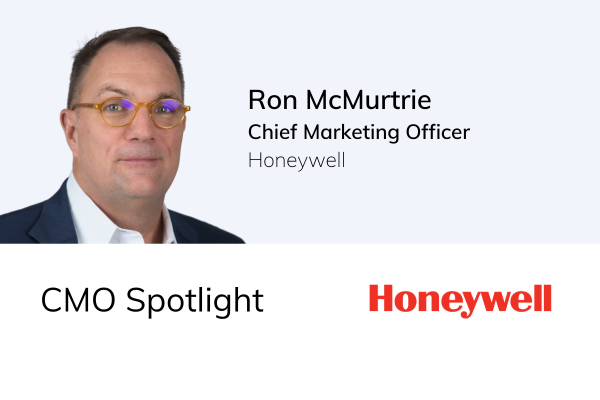Client vs. Agency Side Marketing: Understanding the Different Career Paths
This blog was written by Joe Koufman, Founder + CEO of Setup.
Armed with 20+ years of marketing, business development, and management experience, Joe Koufman founded Setup to ignite relationships between marketing agencies and client-side marketers. His unique agency perspective – having worked at a small digital firm, an independent full-service marketing agency, and a massive holding company – is what inspired Joe to help marketers find agencies that are the perfect fit. He is the author of the upcoming book: The Connector's Compass - Mastering the Art of Business Matchmaking.
Welcome to the crossroads of marketing mastery! In the ever-evolving landscape of marketing, the question isn't just about where to start, but where you want to journey.
At Setup, we have written extensively about the marketing career path as well as the different roles within a marketing agency. Whether you dream of becoming a CMO or leading the charge in a dynamic agency, understanding these paths is your first step toward marketing greatness.
During a recent coffee meeting with Andrea Striebel, VP of Marketing for Floor & Decor, a $3B retailer with over 200 stores in 28 states, we discussed the differences between being on the client-side vs. the agency-side of marketing. Andrea spent the first six years of her career on the agency-side and now has spent over seven years on the client-side, so she has an excellent perspective on both paths, and provided some unique insights for us throughout this blog.
Young marketers graduating from college often ask me whether they should pursue client- or agency-side opportunities for their initial job out of college. I tell them that in the long term, it is always best to get experience with both, but initially, a stint on the agency-side provides more opportunities to learn about different marketing roles, industries, and experiences than the client-side.
Andrea echoed, “I agree - for someone who wants to go into Marketing, but isn't dead-set on a specific vertical yet, agency-side is a great way to get broad exposure quickly.”
Here are the major advantages and disadvantages of being on the agency-side of marketing:
Agency-side advantages:
Diverse Experience: On the agency-side, marketers are exposed to a wide range of industries and clients, offering a rich tapestry of experiences that build versatile skills. This variety allows marketers to work on different types of campaigns, from digital to print and beyond, providing a comprehensive understanding of the marketing landscape.
Creative Collaboration: Agencies often foster environments where creativity is paramount. Marketers collaborate with creative teams, strategists, and other professionals, leading to innovative solutions and groundbreaking campaigns. This collaborative atmosphere is ideal for those who thrive on creative energy and team dynamics.
Rapid Skill Development: The fast-paced nature of agency work demands quick learning and adaptation. Marketers on the agency-side frequently juggle multiple projects and tight deadlines, which accelerates skill development and enhances problem-solving abilities.
Networking Opportunities: Working with various clients, media and ad tech vendors, and industry professionals expands a marketer’s network significantly. These connections can be invaluable for career growth, future opportunities, and industry insight.
Career Flexibility: The broad experience gained at an agency makes marketers more adaptable and versatile, opening doors to numerous career paths within the marketing field and beyond.
Andrea added, “I also think that the ability to switch between accounts and channels fuels this too. When we pitched an OTA (online travel agency) account, it piqued my interest; the agency honored my interest and I was staffed on that account when we won the business. The same thing happened with channels. I started on the SEO side, and after a couple years, wanted to learn the paid advertising side. We upsold one of my clients from just SEO to also paid search and I was able to learn paid search!”
Agency-side disadvantages:
High Pressure and Fast Paced: Agency life can be demanding, with tight deadlines and the pressure to deliver high-quality work consistently. This can lead to stress and burnout if not managed properly.
Less Control Over Projects: Agency marketers often have to align with the client's vision and requirements, which can sometimes limit creative freedom and strategic input.
Variable Work Stability: Depending on the agency’s client roster and market conditions, work can be cyclical, leading to periods of high intensity followed by slower phases.
Shallow Industry Immersion: While agency-side marketers gain broad experience, they may lack the opportunity to dive deeply into a single industry, which can be a disadvantage for those seeking to become industry specialists.
Client Dependence: Agency success is closely tied to client satisfaction and retention. Losing a major client can have significant implications for the agency and its employees.
Client-side advantages:
In-Depth Focus: Working on the client-side allows marketers to delve deeply into a single brand or industry. This focused approach enables them to develop a thorough understanding of the brand’s products, services, and customer base, leading to more strategic and cohesive marketing efforts.
“This is one of the most fulfilling parts of the client side for me. Being able to go in depth on our strategy, whether that's the long-term company-wide growth plan or a near-term cross-functional project,” Andrea shared.
Direct Impact: Client-side marketers often have a greater opportunity to see the direct impact of their strategies on the business. They can witness the fruition of their campaigns in real-time and adjust strategies based on immediate feedback and results.
Stable Work Environment: Typically, client-side positions offer more stability in terms of workload and job security. Companies often provide a steadier pace and clearer career progression paths, which can be more suitable for those seeking long-term job stability.
Greater Control: Marketers on the client-side usually have more control over the marketing strategy and execution. They are closer to the decision-making process, enabling them to guide the brand’s direction and have a significant say in how the marketing budget is allocated.
Cross-Functional Collaboration: Working directly for a brand often means collaborating closely with other departments, such as sales, IT, ecommerce, merchandising, product development, and customer service. This cross-functional interaction enriches the marketing role, providing a holistic view of the business and fostering a more integrated approach to marketing strategies.
Client-side disadvantages:
Limited Scope: While specialization can be an advantage, it can also limit exposure to a variety of marketing practices and industries. This can potentially narrow the skill set and industry perspective of client-side marketers.
Slower Pace of Change: Larger corporations or established companies might have slower processes and resistance to change, which can frustrate marketers used to a fast-paced environment and rapid execution of ideas.
Risk of Siloed Thinking: Being immersed in one brand or industry might lead to siloed thinking, where marketers become so ingrained in their company’s way of doing things that they miss out on broader industry innovations and trends.
“I think of this as having ‘blinders on,’” added Andrea. This is something you have to intentionally seek to counteract on the client side by staying abreast of industry news, attending webinars, conferences, working with key partners in the media and technology space, and networking. When you're on the agency side, the exposure to ad industry trends tends to fall in your lap.”
Internal Politics: Navigating the internal politics of an organization can be challenging and time-consuming. Marketers may need to spend significant time gaining buy-in from various stakeholders for their initiatives, which can slow down the marketing process.
Resource Constraints: Despite having a more direct impact on the company’s strategy, client-side marketers might face budgetary and resource constraints, limiting the scope and scale of marketing campaigns compared to agency work.
Navigating the marketing maze requires a keen understanding of both the client and agency sides of marketing. From the creative chaos of agency life to the strategic depths of client-side roles, each path offers unique challenges and rewards that shape your marketing acumen.
Making the leap from agency to client-side, or vice versa, is a significant career move that offers a fresh perspective and new challenges. Transitioning from an agency to a client-side role allows marketers to deepen their strategic focus, align closely with a single brand's vision, and contribute directly to business outcomes. Conversely, moving from the client to the agency can broaden exposure to diverse marketing strategies, industries, and creative processes. This shift enhances adaptability and cross-functional skills and expands one’s professional network and understanding of the marketing ecosystem. Each transition provides valuable insights into the different forces that drive marketing success and equips professionals with a more holistic view of the industry. Embracing opportunities on both sides of the spectrum can lead to a more versatile, dynamic, and rewarding marketing career.
Armed with these insights and real-world perspectives, you're better equipped to chart your own course in the marketing universe. Whether you choose the diversity and pace of agency work, or the focused impact of client-side efforts, your journey will be rich with learning and growth. So, embrace the adventure, forge your path, and transform the marketing world one campaign at a time. At Setup, we're here to guide you through every twist and turn of your marketing career journey. Let's shape the future of marketing together!
































Over the past year, we’ve watched the following patterns emerge across seemingly unrelated sectors: rising consumer expectations, demand for authenticity, growing complexity, and the tension between automation and human connection.
We interviewed multiple marketers from an array of industries in our blogs below, and we discovered consistent trends across the board. Check out all of our industry blogs throughout 2025 from leaders at Blackbaud, Hiscox USA, Mimedx, MONPURE, Kimberly-Clark Professional, and more.